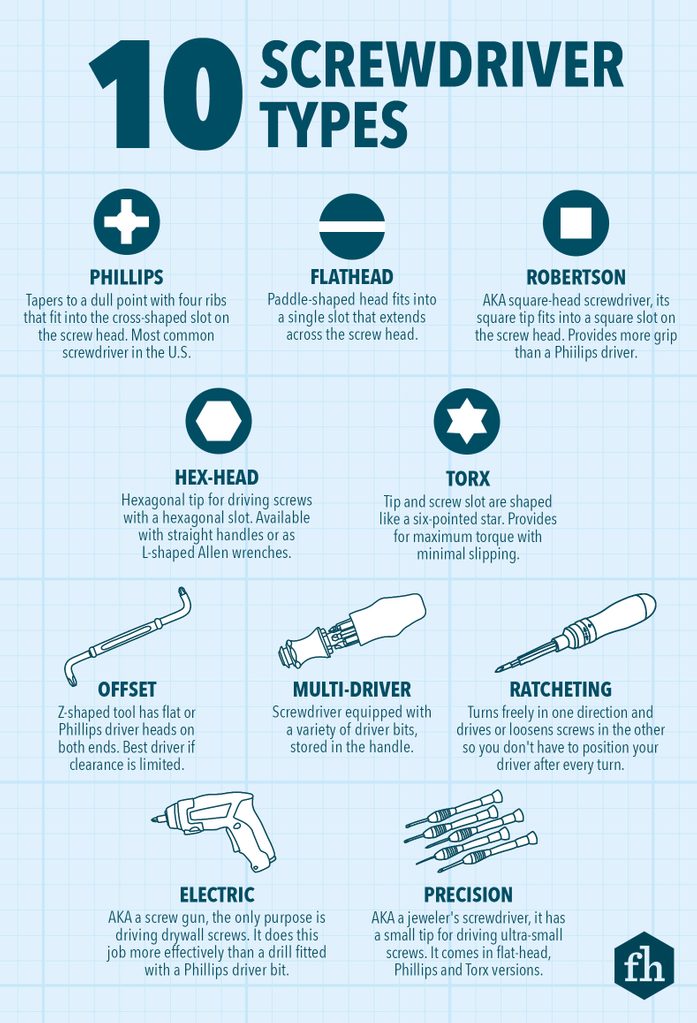10 Screwdriver Types Every Toolbox Should Have

Choosing a Screwdriver
If you do any type of DIY repairs around the house, the tool you’ll need most often is a screwdriver. Besides disassembling things and putting things together, a good screwdriver can serve many other purposes — prying, scraping, even retrieving objects from crevices.
Screwdrivers vary in type and size of slot, and they aren’t interchangeable. Even a DIYer with an extensive collection of screwdrivers in their toolbox may find himself or herself running to the hardware store to buy the exact tool required for the task at hand.
The best way to avoid this is by buying screwdrivers in sets rather than individually. And now, thankfully, screw manufacturers are more or less standardizing the heads of the most commonly used screws.
There are more than 10 screwdriver slot configurations. DIYers only need to worry about five, because the rest are for specialty trades.
What To Consider When Buying a Screwdriver
- Slot configuration: The most common are flathead, Phillips, Robertson, Torx and hex-head.
- Slot size: There are only three or four common sizes for Phillips and Robertson screwdrivers, but there are many more for flat-head, Torx and hex-head. Sometimes it takes trial and error to determine which size you need.
- Shank length: This can vary from a few inches to a foot or more. Longer shanks make for better torque, but lack of clearance may require a shorter shank.
- Handle width: Wider handles develop more torque but can be harder to hold.
- Grip: Rubber-coated handles are easier to hold also also provide extra electrical insulation.
- SAE/Metric: SAE stands for Society of American Engineers, which measures driver size in imperial units (fractions of an inch). Choosing between SAE and metric, which measures in millimeters, is only an issue when selecting hex-head screwdrivers.
- Cost: Quality drivers with shafts of vanadium steel or some other alloy cost more than steel shafts, but they’re worth it. They’re less likely to bend, distort or strip the screw head.

No comments